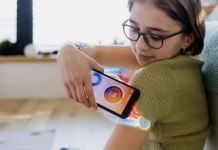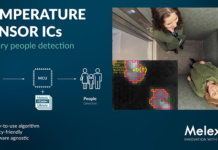Monitoring blood oxygen levels is an essential thing for complete health, as inadequate oxygen can critically harm organ function. As per the data of the NCD Alliance, chronic respiratory illnesses affect at least 550 million adults worldwide and are observed as a main cause of death and incapacity globally in 2022. In response to this strong healthcare demand, pulse oximeters have arisen as a foundation in modern medical practice, giving a non-invasive, quick, and consistent method for assessing oxygen saturation.
Such a crucial device has revolutionised patient care, transitioning from specialised hospital equipment to a widely available tool for both clinical and as well as home use. Certainly, the significance of these devices is reflected in the burgeoning pulse oximeter market, which, as Pristine Market Insights highlights, continues to experience strong development. This article discovers the complex workings of the pulse oximeter, explaining the science behind its process and its profound impact on transforming blood oxygen monitoring for improved health outcomes.
What Is a Pulse Oximeter?
It is a non-surgical and non-piercing medical device. It measures the oxygen saturation in the blood, referred to as SpO2, and also estimates the pulse rate. The device’s primary function is to rapidly and precisely indicate how efficiently oxygen is circulating over the body. It is used widely in almost all locations where healthcare services are accessible, with hospital intensive care units, outpatient clinics, and even at home. Such a device is mostly helpful to persons with health issues.
How Does a Pulse Oximeter Work?
The pulse oximeter process capacity depends on the optical absorption features of oxygenated and deoxygenated haemoglobin. Such equipment normally has a probe that is paired to a body part, which generates two light wavelengths, which are the infrared and red wavelengths. Their function, like oxygenated blood, absorbs infrared light and conveys low red light, and their second function is generally to absorb more red light and emit more infrared light.
Components Inside the Pulse Oximeter
In a pulse oximeter, the light emitters direct light over the skin, while the detectors sense the amount of light that is permitted, which helps to analyse the oxygen levels in the blood. This device senses a light signal, which is distinct from the pulsatile flow of blood and the oxygenation status of haemoglobin, is feeds it to a microprocessor. The microprocessor determines differential light absorption of red and infrared light by oxygenated and deoxygenated blood and utilises pre-programmed algorithms and look-up tables derived from the Beer-Lambert law.
Advantages of Using Pulse Oximeters
- It is non-invasive and easy to practice
- This device allows for real-time monitoring for improved decision-making in the healthcare sector
- It helps detect initial symptoms of oxygen lack, reducing risk and preventing complications
- Use during physical activities, such as for athletes or chronic conditions.
Effect on Healthcare and Everyday Life
Pulse oximeters have reformed healthcare delivery, allowing rapid and non-invasive evaluation of blood oxygen levels in serious emergencies and for handling chronic respiratory situations. Its features became mainly prominent throughout the COVID-19 pandemic, where they served as a vital tool for monitoring patients, those with “silent hypoxemia,” permitting for initial detection of deterioration and timely medical involvement. Such devices’ simple handling and affordability have also opened up access to vital sign monitoring, allowing individuals to track their oxygen saturation at home, develop greater self-management, and potentially reduce hospital visits.
Limitations and Accuracy
Although usually reliable, pulse oximeters have restrictions that impact accuracy. The factors, such as poor circulation due to cold or medical conditions, dark nail polish, artificial nails, and even certain skin tones, possibility to restrict light absorption and sensor readings, generating false results. Extreme measures during measurement can also disturb the signal. There are vital to realise that a pulse oximeter provides an estimation, not an ultimate diagnosis. If you experience concerning signs despite a seemingly normal analysis, or if your readings are reliably low, referring to a doctor for a more comprehensive and accurate assessment, with arterial blood gas analysis, is always suggested.
Future Developments in Pulse Oximetry
The future of pulse oximetry holds a huge opportunity, due to demands for greater accuracy, adaptability, and continuous integration into everyday life. This device can anticipate progressions in sensor expertise, with multi-wavelength sensors and new materials, to further improve exactness and overcome current limitations such as skin tone bias and Movement distortion. There is increasing awareness that wearable pulse oximeters, entrenched in smartwatches or rings, are a considerable innovation, presenting continuous, non-intrusive monitoring.
Additionally, the addition of pulse oximetry with other health technologies such as AI and machine learning will permit predictive analytics and more inclusive health insights, possibly leading to disease detection and personalised care pathways.
How It Transforms Blood Oxygen Monitoring
The pulse oximeter has altered blood oxygen monitoring, giving a fast, non-invasive, and real-time method to device oxygen levels. Making a difference from the outdated techniques that required blood samples, the device uses a light detector to regulate oxygen saturation. It permits constant monitoring, allowing healthcare professionals to obtain faster, more precise results, mainly in urgent or critical situations. Such an invention has made it easy to the tracking of respiratory health for patients and doctors, enabling early recognition of low oxygen levels and improving overall care.
Conclusion
Pulse oximeters have revolutionised healthcare help to making blood oxygen monitoring simpler, more available, and non-invasive. Such vital strategies are now crucial for both clinical management of diverse conditions and allowing individuals to track their health, eventually enhancing patient care and helping to achieve better health outcomes globally.

















